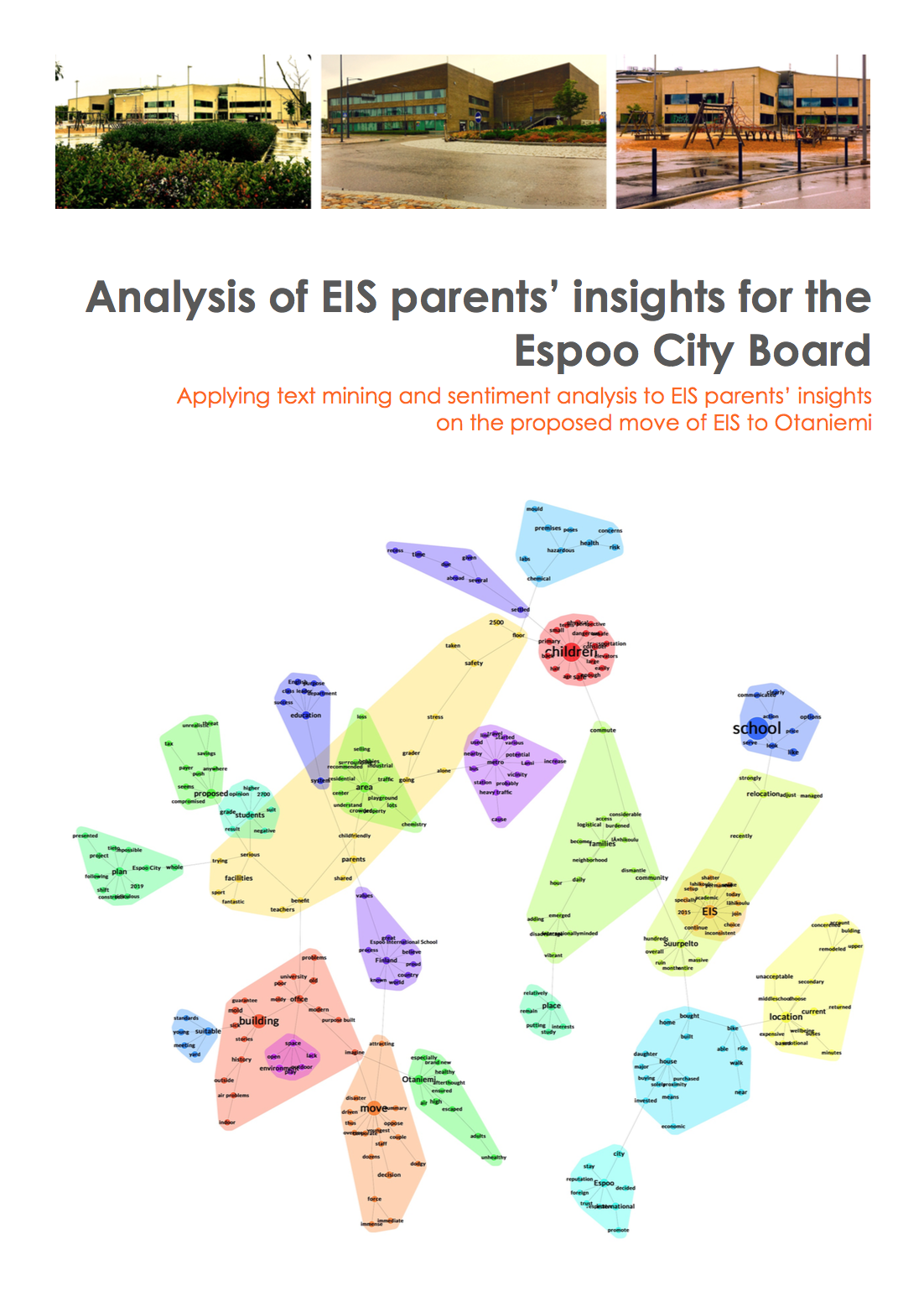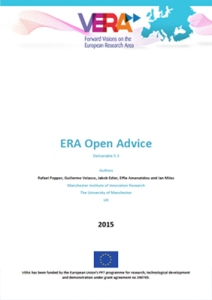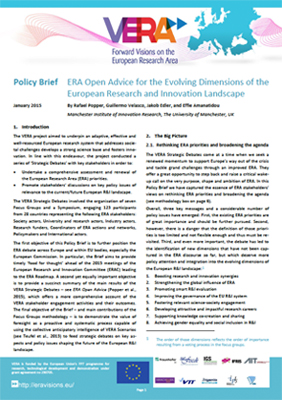Archive
And the Finnish honeymoon goes on… thanks to the lovely community spirit of our neighbourhood (Henttaa, Espoo)
Finland is globally known as a cold Nordic country… However, since we arrived in 2016 we have been surprised about the warmth we have experienced in the neighbourhood we chose to settle in. Whether it is luck, karma or a generalisable ‘beyond the obvious’ feature of the Finnish society, we feel blessed to have met a countless and growing number of people living in what we can only describe as a hidden “magical oasis” in the heart of Espoo (Hennttaa and its surroundings), also known as Lillhemt ❤️
Here is an unconventional description of our family in an article called “Meet the Poppers” that the local newspaper Lillhemtin Sanomat published both in English and Finnish to welcome and introduce us to the lovely community where we live!


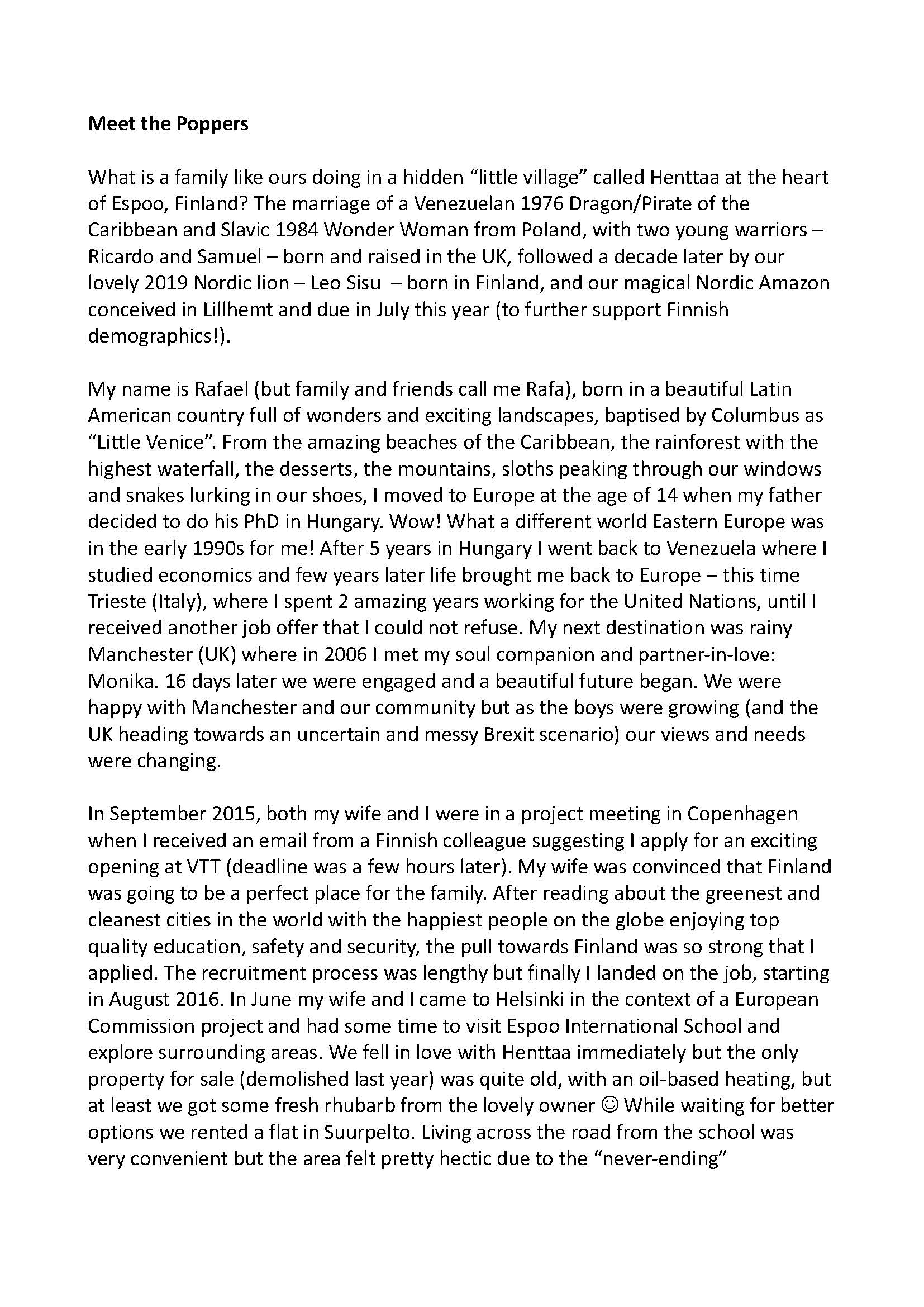
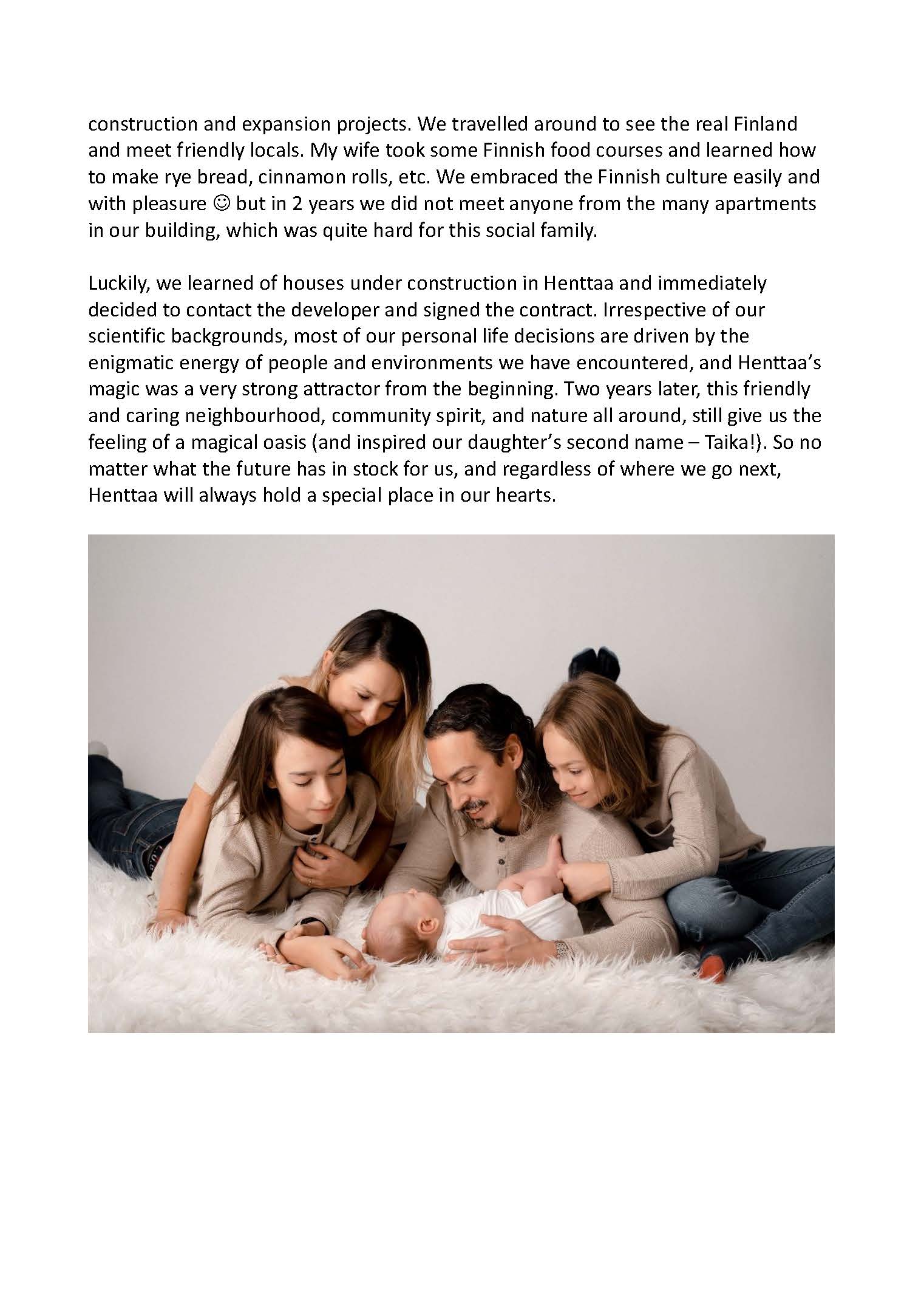
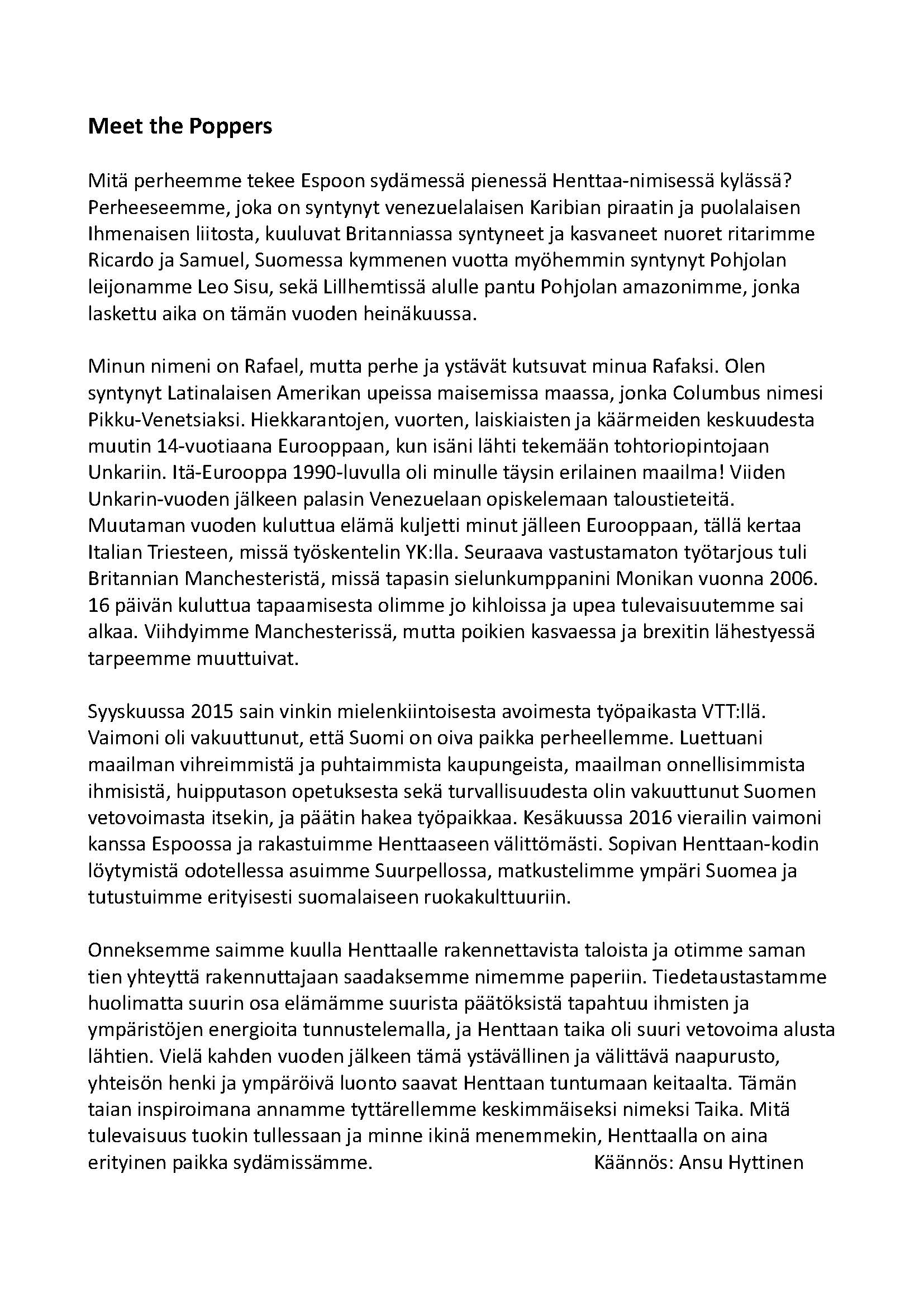

Public report on the Analysis of EIS parents’ insights for the Espoo City Board
Applying text mining and sentiment analysis to EIS parents’ insights on the proposed move of EIS to Otaniemi
EIS Community opinions and insights regarding the proposed relocation of EIS to Otaniemi were gathered through the EIS Community Survey, the EIS Advisory Referendum and on this Blog.
All comments and insights gathered through these sources were collectively analysed applying text mining and sentiment analysis (also known as opinion/emotion mining) given the subjectivity of the information and the sensitivity of the subject to survey respondents and blog visitors, and therefore the obvious presence of emotions and sentiments behind the text.
A total of 639 arguments were pulled out from all the above-mentioned information sources and analysed with the Kapiche text mining and analytical tool using additional sentiment identification functionalities. Identified terms and key terms were clustered into most frequent topics (i.e. key issues), the top 5 of which are presented in more details in the following sections and supported by anonymous examples of the most prominent comments submitted by the EIS Community members. The report includes the top 5 strongest topics driving positive and negative sentiment identified in the analysed dataset and provides 3 conclusions and related recommendations.
To download the report please click here or the image below.
Open Advice for the European Research Area (ERA)
The ERA Open Advice report and related Policy Brief come at a time when we seek a renewed momentum to support Europe’s way out of the crisis and tackle grand challenges through an improved European Research Area (ERA). They offer a great opportunity to step back and raise a critical wake-up call on the very purpose, shape and ambition of ERA. Here we have captured the essence of ERA stakeholders’ views on rethinking ERA priorities and broadening the agenda.
Three key messages and a considerable number of policy issues have emerged: First, the existing ERA priorities are of great importance and should be further pursued. Second, however, there is a concern that the definition of those priorities is too narrow and not flexible enough and thus must be re-visited. Third, and even more important, the debate has led to the identification of new ERA dimensions that have not been captured in the ERA discourse so far, but which deserve more policy attention and integration into the evolving dimensions of the European R&I landscape.
To download the report and policy brief please click on the images below or visit the VERA project website at: http://www.eravisions.eu/documents/deliverables
See also ERA_Strategy_Map
3rd CASI Capacity Building (Coventry, 24-25 June 2014)
The CASI project (http://www.casi2020.eu) has been launched within the context of the Europe 2020 Strategy, which aims to achieve smart, sustainable, and inclusive growth. Within this strategy, sustainability was identified as a priority aspect of economic growth for the European Union. An initial survey of the literature shows that sustainability has three major dimensions – social, economic, and environmental. Europe, along with the rest of the world, faces serious challenges on all three dimensions. While many of the challenges are global in scope, remedies may, in some cases, be specific for the European continent, or even for particular Member States. Since the proposed action, ’Public participation in developing a common framework for assessment and management of sustainable innovation’ (CASI), has been developed in order to address the grand challenge – “Climate action, resource efficiency and raw materials”- the project will focus on technological and social innovation aiming to improve the environmental sustainability of our economies, while at the same time considering the economic and social aspects of sustainability.
The CASI capacity building events are organised by the consortium partners and the third event was held in Coventry, UK. The programme targeted CASI Country Correspondents (CC) from 8 countries (France, Netherlands, Ireland, Estonia, Romania, Lithuania, Luxembourg and Slovakia) and included lectures and practical sessions covering the following topics:
- Different types of innovation and their relevance to the sustainability context
- Sustainable Innovation: definitions, key ideas, schools of thought and domains of application; key debates; implications for the public/private sector
- Sustainable innovation within a policy framework: The Grand Challenge “Climate Action, resource efficiency, and raw materials” and implications on national, EU and global level
- Social innovations and their relevance to sustainability
- Group work: examples of social innovation; discuss application to sustainability; elaborate societal impacts; identify key stakeholders; define policy challenges from national/EU/global perspective
- Technological innovations and their relevance to sustainability
- What are sustainable innovation cases? How to spot them? How to determine if they fit CASI? What information has to be found to confirm a case is CASI-relevant (and “mappable”)?
- The CASI mapping process: What is mapping?; What do we map and why?; How do we make meaning out of mapped cases?
2nd CASI Capacity Building (Vienna, 10-11 June 2014)
The CASI project (http://www.casi2020.eu) has been launched within the context of the Europe 2020 Strategy, which aims to achieve smart, sustainable, and inclusive growth. Within this strategy, sustainability was identified as a priority aspect of economic growth for the European Union. An initial survey of the literature shows that sustainability has three major dimensions – social, economic, and environmental. Europe, along with the rest of the world, faces serious challenges on all three dimensions. While many of the challenges are global in scope, remedies may, in some cases, be specific for the European continent, or even for particular Member States. Since the proposed action, ’Public participation in developing a common framework for assessment and management of sustainable innovation’ (CASI), has been developed in order to address the grand challenge – “Climate action, resource efficiency and raw materials”- the project will focus on technological and social innovation aiming to improve the environmental sustainability of our economies, while at the same time considering the economic and social aspects of sustainability.
The CASI capacity building events are organised by the consortium partners and the 2nd event was held in Vienna, Austria. The programme targeted CASI Country Correspondents (CC) from 8 countries (Croatia, Cyprus, Greece, Hungary, Latvia, Malta, Spain and Sweden) and included lectures and practical sessions covering the following topics:
- Different types of innovation and their relevance to the sustainability context
- Sustainable Innovation: definitions, key ideas, schools of thought and domains of application; key debates; implications for the public/private sector
- Sustainable innovation within a policy framework: The Grand Challenge “Climate Action, resource efficiency, and raw materials” and implications on national, EU and global level
- Social innovations and their relevance to sustainability
- Group work: examples of social innovation; discuss application to sustainability; elaborate societal impacts; identify key stakeholders; define policy challenges from national/EU/global perspective
- Technological innovations and their relevance to sustainability
- What are sustainable innovation cases? How to spot them? How to determine if they fit CASI? What information has to be found to confirm a case is CASI-relevant (and “mappable”)?
- The CASI mapping process: What is mapping?; What do we map and why?; How do we make meaning out of mapped cases?
CASI Capacity Building (Sofia, 07-09 May 2014)
The CASI project (http://www.casi2020.eu) has been launched within the context of the Europe 2020 Strategy, which aims to achieve smart, sustainable, and inclusive growth. Within this strategy, sustainability was identified as a priority aspect of economic growth for the European Union. An initial survey of the literature shows that sustainability has three major dimensions – social, economic, and environmental. Europe, along with the rest of the world, faces serious challenges on all three dimensions. While many of the challenges are global in scope, remedies may, in some cases, be specific for the European continent, or even for particular Member States. Since the proposed action, ’Public participation in developing a common framework for assessment and management of sustainable innovation’ (CASI), has been developed in order to address the grand challenge – “Climate action, resource efficiency and raw materials”- the project will focus on technological and social innovation aiming to improve the environmental sustainability of our economies, while at the same time considering the economic and social aspects of sustainability.
The CASI capacity building events are organised by the consortium partners and the first event was held in Sofia, Bulgaria. The programme included lectures and practical sessions covering the following topics:
- Overview of capacity building workshop
- Different types of innovation and their relevance to the sustainability context
- Sustainable Innovation: definitions, key ideas, schools of thought and domains of application; key debates; implications for the public/private sector
- Sustainable innovation within a policy framework: The Grand Challenge “Climate Action, resource efficiency, and raw materials” and implications on national, EU and global level
- Social innovations and their relevance to sustainability
- Group work: examples of social innovation; discuss application to sustainability; elaborate societal impacts; identify key stakeholders; define policy challenges from national/EU/global perspective
- Technological innovations and their relevance to sustainability
- What are sustainable innovation cases? How to spot them? How to determine if they fit CASI? What information has to be found to confirm a case is CASI-relevant (and “mappable”)?
- The CASI mapping process: What is mapping?; What do we map and why?; How do we make meaning out of mapped cases?
- The “technology” of mapping a case — demonstration
VERA Focus Group 1 (Vienna, 23/01/2014)
This slideshow highlights key moments of the first strategic debate focus group (FG) on strategies and recommendations for the future of European Research Area (ERA) with selected society actors in Europe. The FG was part of VERA Work Package 5 activities led by the Manchester Institute of Innovation Research (MIoIR) in the framework of the European Commission funded VERA project.
The Vienna focus group (FG) explored:
- Key opportunities and threats of ERA futures for society actors.
- Key strategies of society actors vis-à-vis ERA scenarios by 2030.
- Key objectives of society actors that could be included in the ERA agenda.
- Key strategies of society actors vis-à-vis ERA objectives.
- Key recommendations from society actors for ERA-relevant actions today.
This discussion on the possible futures of the European Research Areas and the perspectives and interests of different stakeholders is a crucial input into the debate and policy making process at the European and national level. ERA is a dynamic concept, and it must be thought of as a long term endeavour, considering the implications for and strategies of all stakeholders involved.
